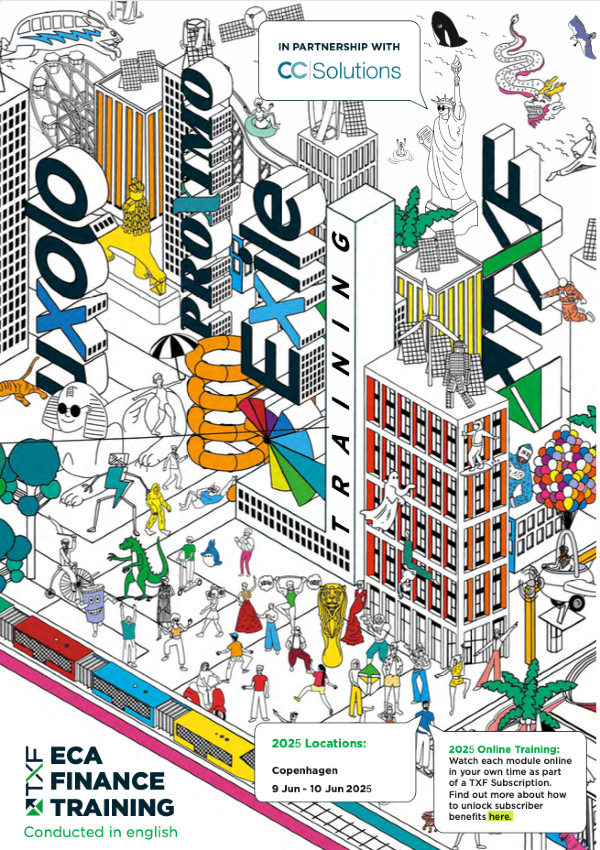The LIBOR transition: Olam’s SORA-tied loan debut
With the complicated transition away from LIBOR looming at the end of 2021, Olam has secured Singapore’s first club deal pegged to the country’s new Singapore Overnight Rate Average (SORA) benchmark. But not every corporate borrower is as prepared as the Singaporean food and agri-business for the change away from LIBOR, a daily benchmark which has determined interest rates for $250 trillion of debt and derivatives for over 40 years.

Commodity trader Olam, alongside its wholly owned subsidiary Olam Treasury, has closed a one-year SGD$200 million ($145 million) revolver credit facility - the country’s first ever club loan pegged to a new benchmark, SORA. Proceeds from the deal will be used to refinance part of Olam’s existing debt.
Closed in late September, the facility marks the advent of the shift towards a more widespread adoption of the SORA benchmark in the nation’s cash and derivatives market, with an overnight rate now preferred to LIBOR, the daily rate which has enabled banks to lend to one another over a certain period since 1986.
Both lenders, DBS (bookrunner and facility agent) and ICBC, were mandated lead arrangers on the financing. The two banks are keen to establish a presence in the SORA transition, providing a deal precedent which will grow dealmakers' confidence in the new offering and encourage more corporates to follow suit.
The loan comes with a pricing ‘safety net’, as it is coupled with a cross currency swap option. This gives Olam the opportunity to enter into a SORA currency exchange with DBS at the start of each interest period to swap SGD proceeds into US dollars if the price is right.
A source close to the deal tells TXF: “The option of swapping to US dollar based on the Libor rate means this facility works exactly in line with any other LIBOR loan and will either be equivalently priced, or better priced”.
This deal has also provided a financing template for future SORA-tied loans. “We’re open to collaborating with our other relationship banks to promote alternative benchmarks,” adds the source. “We would be happy to close some deals in other currencies as well, once we have a deeper understanding of the transition requirements”.
A month prior to Olam’s SORA loan, Singapore-based agribusiness Wilmar closed the country’s first SORA-based corporate deal. The bilateral SGD$200 million loan is also coupled with an interest rate swap and was provided by DBS.
Tan Su Shan, group head, institutional banking group at DBS, commented that both Wilmar and Olam are putting themselves in a strong position by tapping Sora pegged loans so early on in the transition, as “they will have a greater understanding of how SORA works and will be at the forefront of innovative SORA-based financings as market adoption increases”.
The end of LIBOR
The preparation to transition to SORA stems from the phasing out of UK benchmark LIBOR. The UK Financial Conduct Authority (FCA)’s announcement that it will not require banks to submit rates used for the calculation of Libor after 31 December 2021 directly affects the usability of SIBOR/SOR, which, along with five different currencies (US Dollar, UK sterling, Euro, Japanese Yen and the Swiss Franc) and seven tenors (overnight/spot next, one week, one month, two months, three months, six months, and one year), uses LIBOR in its computation.
SORA, the alternative benchmark to SIBOR/SOR, is the volume-weighted average rate of unsecured overnight interbank SGD transactions in Singapore between 9:00am and 6:15pm.
There has been some initial wariness over the volatility of this benchmark, but most overnight benchmark rates take an average rate from over a few months, rather than a single day. So, most Sora loan contracts are likely to be settled against an average, which, across June and July of this year, was more stable than SOR was over the same time period.
Previously, LIBOR has been determined on bank submissions of their own interbank borrowing rates. But now that regulatory standards are creeping up, these submissions have significantly lessened, and LIBOR has been based off banks’ judgement rather than transactional data. This has left LIBOR vulnerable to manipulation and its phasing out is aimed to improve the robustness and integrity of financial benchmarks.
The TXF perspective
According to TXF’s Commodity Trade Finance Industry Report 2020, which comprises quantitative and qualitive data from 130 advisers, banks, brokers, law firms, private insurers, traders and producers, not everyone is as prepared as Olam and Wilmar. One quarter of participants have said that they are not aware of the discontinuation of LIBOR. Although this may seem like a low fraction, considering that 83% of participants are of decision-making level in their respective companies, one would expect a higher level of awareness within this data sample.
It is clear that there is a fair amount of work to be done before the sector is prepared to fully adopt the new benchmarks, with a survey by Duff and Phelps reporting that 65% of firms have not undergone planning for the transition, despite the estimated $350 trillion worth of financial contracts currently underpinned by LIBOR across the globe.
Less surprising, considering many banks, traders and producers are have not begun to prepare for the transition happening in over a years’ time, awareness of various new risk-free rates amongst the report's data sample was relatively low. The highest scorers at 3/5, and therefore the rates with the most awareness, were Secured Overnight Financing Rate (SOFR) for the US dollar, the Sterling Overnight Interbank Average Rate (SONIA) and the Euro Short-Term Rate (ESTER). The Canadian Overnight Repo Rate Average (CORRA) scored the lowest, at just 1/5.
The Covid crisis is likely to have put preparations for the phasing out of LIBOR on the backburner for many companies. But the FCA, Bank of England and the Working Group on Sterling Risk-Free Reference Rates have stated that this will not be factored into the transition timeline, and that institutions “cannot rely on LIBOR being published after the end of 2021.”
Data from the TXF report shows that the greatest challenges in adapting to the new rates is the process of starting the transition, with just over half of participants agreeing to this. This highlights that Olam and Wilmar have positioned themselves ahead of the majority of the market, having begun to work on the transition. Other main concerns were changing the basis (38%) and identifying all the products that are impacted (32%).
With some corporates having begun to establish a clear blueprint for the elimination of LIBOR, while others are not yet aware of the transition, the sector is in no clear state of preparedness. Market participants need to take a more hands-on approach in understanding and adapting the new benchmarks. As the changeover involves such a vast number of industry participants, not only in the commodities sector, a strong sense of industry co-ordination and engagement is crucial in achieving a smooth benchmark shift.
For more information on The Global Commodity Trade Finance Industry Report 2020, or to discuss any research ideas you would like to see TXF undertake, please do not hesitate to contact Dr. Tom Parkman, head of research, at tom.parkman@txfmedia.com and Andrew Rankin, head of marketing, business intelligence, at andrew.rankin@txfmedia.com.
DISCLAIMER:
TXF Limited “TXF” makes no representation regarding the completeness, accuracy, or timeliness of any information and data provided or that such information and data will be error-free. TXF assumes no responsibility for the consequences of use of the information. In no event shall TXF be liable for any direct, indirect, special or incidental damage resulting from, arising out of or in connection with the use of the information. Users are encouraged to visit and review individual deal data on www.tagmydeals.com and contribute to the completeness and accuracy of our deal coverage.





